Reissue CDs Weekly: Laura Nyro - American Dreamer | reviews, news & interviews
Reissue CDs Weekly: Laura Nyro - American Dreamer
Reissue CDs Weekly: Laura Nyro - American Dreamer
Lavish box-set collection of important albums by ‘The Funky Madonna of New York Soul’

“She is a 20-year-old white New Yorker who sings like a 55-year-old black lady from Mississippi.
In January 1970, Life magazine ran a feature on Nyro which was headed “The Funky Madonna of New York Soul.” By then, New York Tendaberry was out. Her follow-up, Christmas And The Beads Of Sweat, was being recorded when the article appeared.
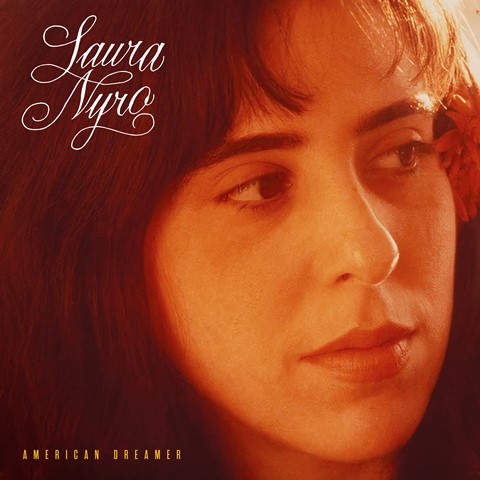 Both descriptions demonstrate a unanimity about what Nyro represented: she was creating a form of soul music. But there was another point of agreement. Roxon noted “she wrote ‘Stoned Soul Picnic’ for The 5th Dimension…giving them a major hit.” This cast Nyro as a back-room songwriter, a Jimmy Webb type. No matter that “Stoned Soul Picnic” was drawn from her second album, Eli And The Thirteenth Confession. Life went further: “right now [she] is probably the most successful pop composer around…it seems like the easiest way for other performers to have hits is to record her songs.” And hits there were: The 5th Dimension also did Nyro’s “Wedding Bell Blues”, Three Dog Night did "Eli's Comin'”, Barbra Streisand did "Stoney End". Frank Sinatra jumped on board too.
Both descriptions demonstrate a unanimity about what Nyro represented: she was creating a form of soul music. But there was another point of agreement. Roxon noted “she wrote ‘Stoned Soul Picnic’ for The 5th Dimension…giving them a major hit.” This cast Nyro as a back-room songwriter, a Jimmy Webb type. No matter that “Stoned Soul Picnic” was drawn from her second album, Eli And The Thirteenth Confession. Life went further: “right now [she] is probably the most successful pop composer around…it seems like the easiest way for other performers to have hits is to record her songs.” And hits there were: The 5th Dimension also did Nyro’s “Wedding Bell Blues”, Three Dog Night did "Eli's Comin'”, Barbra Streisand did "Stoney End". Frank Sinatra jumped on board too.
Life’s writer Maggie Paley got to grips with the Laura Nyro style which was proving so popular for acts looking for material. She writes “songs that blend gospel, rock 'n roll, jazz and blues (people also hear in them classical influences, from Schumann to Stravinsky),” said wrote. “Lyrics that are knowing, evocative, elusive, personal; and a voice full of soul and nuance. She [also] has songs that are more like progressive jazz, with lyrics that speak of pain as well as joy.”
So that’s one characteristic of Laura Nyro. She recorded songs which were covered. There’s another aspect. Her influence.
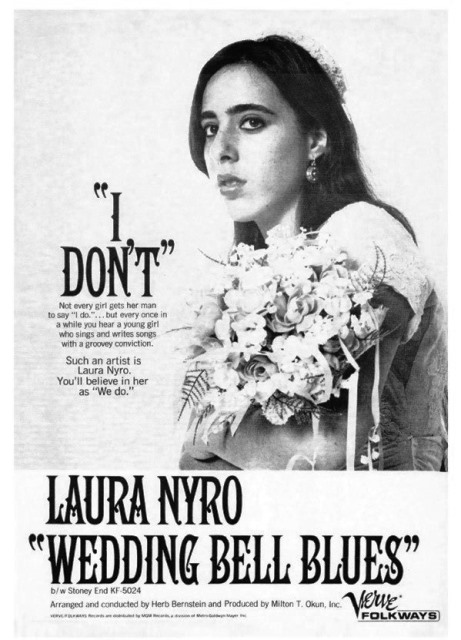 Many were smitten. Amongst them was Todd Rundgren, who heard Nyro while he was in the Anglophile rock-pop band The Nazz. The experience changed his songwriting. “Hello it’s me” was evidence of the impact. In the book coming with the new American Dreamer box set, Elton John says “I used to listen to Laura Nyro in the late ’60s and she influenced my music and writing so much. She was the first writer I heard who didn’t follow verse, chorus, middle eight, verse, chorus, middle eight structures. She changed tempos and there were no rules for her which was absolutely spellbinding.” Joni Mitchell admits “Laura exerted an influence on me. I looked to her and took some direction from her. On account of her I started playing piano again [i.e. on Ladies of the Canyon and Blue].” It’s unlikely Carole King would have made Tapestry without a Nyro influence. Less stratospherically, the singer-songwriter Bill Puka issued an entire (and fantastic) Nyro-influenced album in 1970. A while later, no Laura Nyro, no Kate Bush.
Many were smitten. Amongst them was Todd Rundgren, who heard Nyro while he was in the Anglophile rock-pop band The Nazz. The experience changed his songwriting. “Hello it’s me” was evidence of the impact. In the book coming with the new American Dreamer box set, Elton John says “I used to listen to Laura Nyro in the late ’60s and she influenced my music and writing so much. She was the first writer I heard who didn’t follow verse, chorus, middle eight, verse, chorus, middle eight structures. She changed tempos and there were no rules for her which was absolutely spellbinding.” Joni Mitchell admits “Laura exerted an influence on me. I looked to her and took some direction from her. On account of her I started playing piano again [i.e. on Ladies of the Canyon and Blue].” It’s unlikely Carole King would have made Tapestry without a Nyro influence. Less stratospherically, the singer-songwriter Bill Puka issued an entire (and fantastic) Nyro-influenced album in 1970. A while later, no Laura Nyro, no Kate Bush.
But whither Laura Nyro herself amongst all this? What’s in the grooves of the eight-album set American Dreamer resolutely brings her to the surface. Collected are her 1967 first album More Than A New Discovery, Eli And The Thirteenth Confession (1968), New York Tendaberry (1969), Christmas And The Beads Of Sweat (1970), Gonna Take A Miracle (1971), Smile (1976), Nested (1978) and a disc titled Rarities & Live Recordings which vinyl-ises bonus tracks from previous individual CD versions of the albums. It all comes in a slipcase, which slots into an outer case. Where there were originally lyric sheets or inserts, these are reproduced (no perfumed paper though). The accompanying book is written by cultural historian Peter Doggett. (An aside re this column’s title: Reissue CDs Weekly is a handle of convenience, one that’s recognisable as it’s instantly obvious what it’s about. Of course, as evident this week, vinyl archive releases are accommodated too: as well as albums, singles and EPs have been covered. If the title were altered to Reissues Weekly it’d probably be unclear what’s at hand, so Reissue CDs Weekly it is)
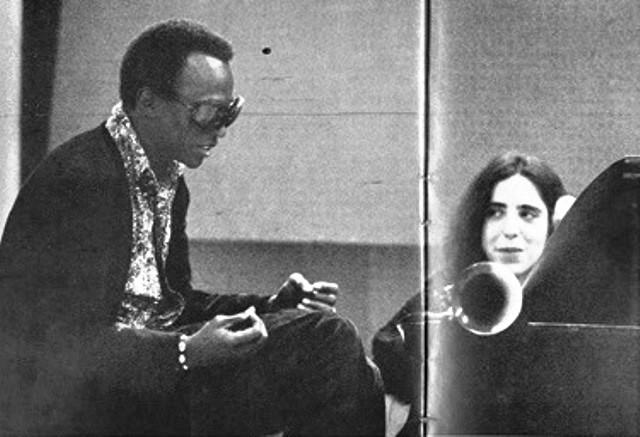 Laura Nyro’s first four albums are mind-bogglingly brilliant, despite More Than A New Discovery being brought to vinyl by music-biz men who separated her from her piano. Composition-wise, the writing and performances on each is more grand architecturally, more rococo than on its predecessor. Though very different musically, in this period only Tim Buckley is comparable in terms of pushing so far beyond conventional songwriting structure and incorporating non-pop forms into his compositions. Nyro’s was a hermetic and total sound-world. Miles Davis recognised this – when Nyro asked him to contribute to New York Tendaberry, he said there was no need. Nothing further was necessary. Whatever their takes on music, they were kindred, questing spirits and respected each other. Indeed, in June 1970 his challenging Quintet opened for Nyro at New York’s Fillmore East. The bizarre billing was due to their connection. (pictured right, Miles Davis with Laura Nyro)
Laura Nyro’s first four albums are mind-bogglingly brilliant, despite More Than A New Discovery being brought to vinyl by music-biz men who separated her from her piano. Composition-wise, the writing and performances on each is more grand architecturally, more rococo than on its predecessor. Though very different musically, in this period only Tim Buckley is comparable in terms of pushing so far beyond conventional songwriting structure and incorporating non-pop forms into his compositions. Nyro’s was a hermetic and total sound-world. Miles Davis recognised this – when Nyro asked him to contribute to New York Tendaberry, he said there was no need. Nothing further was necessary. Whatever their takes on music, they were kindred, questing spirits and respected each other. Indeed, in June 1970 his challenging Quintet opened for Nyro at New York’s Fillmore East. The bizarre billing was due to their connection. (pictured right, Miles Davis with Laura Nyro)
Gonna Take A Miracle is brilliant in a different way. Recorded in Philadelphia with producers Gamble & Huff and singers Labelle, it paid tribute to the soul music she grew up with. Of course, she could make it intense. Doggett writes that her versions of “The Bells” and “Gonna Take a Miracle” “became vehicles for soul excursions of almost erotic intensity.” It’s wonderful, but Doggett notes that “reviewers reacted with bewilderment, at best, and sometimes outright hostility. The Hartford Courant declared that ‘Gonna Take a Miracle’ ‘should never have left the studio’. The Montreal Gazette said it was embarrassing; the Santa Cruz Sentinel awarded it a D-grade.”
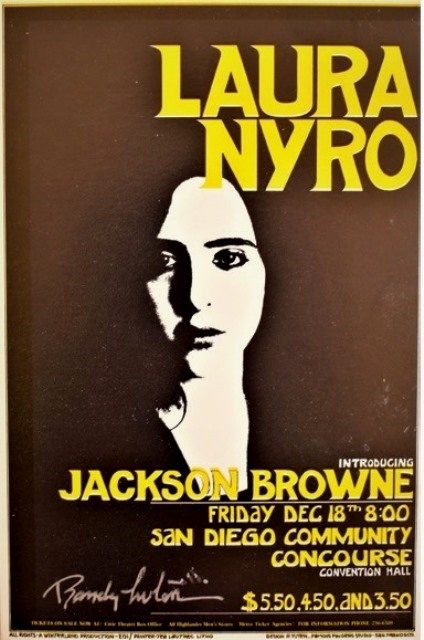 Around this time, business bust ups and changes in her personal life impacted on Nyro’s forward motion. She split with manager David Geffen, who was setting up his Asylum label. She continued with Columbia rather than moving over to his new LA-based imprint. Still, he did get Judee Sill for Asylum – perhaps a surrogate Nyro? Anyway, he had Crosby, Stills & Nash and Joni Mitchell on his books so the days when his entire attention was focussed on Nyro were over.
Around this time, business bust ups and changes in her personal life impacted on Nyro’s forward motion. She split with manager David Geffen, who was setting up his Asylum label. She continued with Columbia rather than moving over to his new LA-based imprint. Still, he did get Judee Sill for Asylum – perhaps a surrogate Nyro? Anyway, he had Crosby, Stills & Nash and Joni Mitchell on his books so the days when his entire attention was focussed on Nyro were over.
Smile arrived after a period away from the music biz and although the songs are recognisably her’s, the performances were relatively muted, the compositional elaboration was reined in, and the glossy arrangements and session-player instrumentation were by rote. Still, its title track included a disarming reference to sexual pleasure: “the fire and the kiss of the cunt-tree night.” Despite her lyrical opaqueness, there was always a concurrent, contrasting directness and explicitness in what she addressed. “Poverty Train” from Eli And The Thirteenth Confession was unambiguously about heroin addiction. “Been on a Train” from Christmas And The Beads Of Sweat dealt with the death by overdose of her cousin.
In person, she was similarly open. Doggett writes “she named a single acid trip as the decisive episode of her youth: ‘my change of life’, as she put it. She had spent nine hours, she remembered, under siege from ‘creatures who were sort of half men and half rats’. Laura recounted that experience in more symbolic terms to the sympathetic Mary Campbell of Associated Press: ‘I met with the Devil, and he stood before me. Physically. In my own life. He was in my room. I had a battle with him and I chased him away. I was doing everything I didn’t believe in. I was 18. It was like make it or break it, and I made it. I rose to the occasion.’” Her own life fed her compositions.
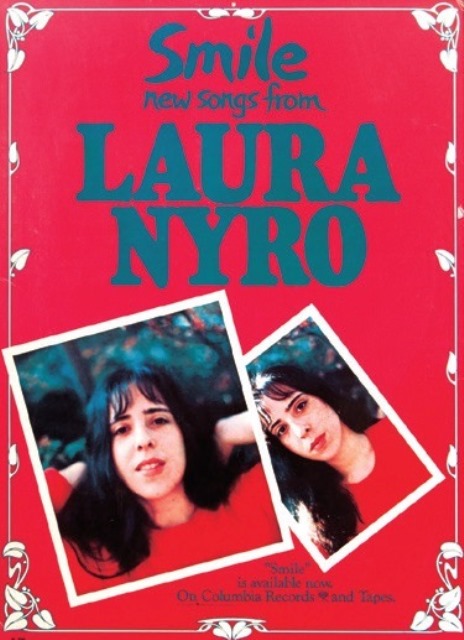 But as Smile confirmed, some of the intensity evaporated over time. Todd Rundgren, who knew her, says Eli And The Thirteenth Confession “had the underlining emotional tension to the point of hysteria. That really gave the album its weight, and on top of it, the songwriting was incredible. Because of the success of that album she did gain greater freedom, but on no record that she made after that did she achieve the same sort of level of intensity.” She could maintain that pitch for only so long.
But as Smile confirmed, some of the intensity evaporated over time. Todd Rundgren, who knew her, says Eli And The Thirteenth Confession “had the underlining emotional tension to the point of hysteria. That really gave the album its weight, and on top of it, the songwriting was incredible. Because of the success of that album she did gain greater freedom, but on no record that she made after that did she achieve the same sort of level of intensity.” She could maintain that pitch for only so long.
After Smile, Nested had rougher edges and was recorded with a mobile studio brought to her home. American Dreamer’s most straightforward album is also the set’s least commercially successful. Despite the lack of success as a single’s artist, her early albums had sold well – by January 1970, Eli And The Thirteenth Confession had sold 150,000 copies, New York Tendaberry 200,000. She also had a committed, sizeable following – the book goes into this very interestingly. Laura Nyro was not obscure or peripheral.
Following Nested, there were two more albums: 1984’s Mother’s Spiritual and 1993’s Walk The Dog And Light The Light. American Dreamer includes neither despite – like everything in the box – their rights being held by Sony. In April 1997, at age 49, she died of cancer. Archive releases of live and previously unheard material followed, as did (still available) CD reissues and audiophile vinyl versions of her albums.
Manifestly, what's collected by American Dreamer needs to be heard. The mastering is great, with a warmth and a dynamic consistent with the analogue sources. The text in the nicely illustrated book compels and is insightful. She was influential and, out of her hands, Nyro's songs had their own lives. But it’s these albums which drill down into what made her tick musically. Herein then, Laura Nyro herself.
- Next week: Goldie & the Gingerbreads are celebrated with Thinking About The Good Times – Complete Recordings 1964–1966
- More reissue reviews on theartsdesk
- Kieron Tyler’s website
Share this article
The future of Arts Journalism
You can stop theartsdesk.com closing!
We urgently need financing to survive. Our fundraising drive has thus far raised £49,000 but we need to reach £100,000 or we will be forced to close. Please contribute here: https://gofund.me/c3f6033d
And if you can forward this information to anyone who might assist, we’d be grateful.

Subscribe to theartsdesk.com
Thank you for continuing to read our work on theartsdesk.com. For unlimited access to every article in its entirety, including our archive of more than 15,000 pieces, we're asking for £5 per month or £40 per year. We feel it's a very good deal, and hope you do too.
To take a subscription now simply click here.
And if you're looking for that extra gift for a friend or family member, why not treat them to a theartsdesk.com gift subscription?
more New music
 Album: Nova Twins - Parasites & Butterflies
Exciting London duo turn inward and more introspective with their third album while retaining their trademark hybrid sound
Album: Nova Twins - Parasites & Butterflies
Exciting London duo turn inward and more introspective with their third album while retaining their trademark hybrid sound
 Music Reissues Weekly: The Beatles - What's The New, Mary Jane
John Lennon’s queasy, see-sawing oddity becomes the subject of a whole album
Music Reissues Weekly: The Beatles - What's The New, Mary Jane
John Lennon’s queasy, see-sawing oddity becomes the subject of a whole album
 The Maccabees, Barrowland, Glasgow review - indie band return with both emotion and quality
The five-piece's reunion showed their music has stood the test of time.
The Maccabees, Barrowland, Glasgow review - indie band return with both emotion and quality
The five-piece's reunion showed their music has stood the test of time.
 Album: Blood Orange - Essex Honey
A triumph for the artist who doesn't clamour for attention but just keeps growing
Album: Blood Orange - Essex Honey
A triumph for the artist who doesn't clamour for attention but just keeps growing
 Houghton / We Out Here festivals review - an ultra-marathon of community vibes
Two different but overlapping flavours of subculture full of vigour
Houghton / We Out Here festivals review - an ultra-marathon of community vibes
Two different but overlapping flavours of subculture full of vigour
 Album: Wolf Alice - Clearing
Ten years from their debut, Wolf Alice once again make magic from the familiar
Album: Wolf Alice - Clearing
Ten years from their debut, Wolf Alice once again make magic from the familiar
 Album: Deftones - Private Music
Deftones give us a glimmer of hope, but that's all...
Album: Deftones - Private Music
Deftones give us a glimmer of hope, but that's all...
 Album: Eve Adams - American Dust
Taking inspiration from the Californian desert
Album: Eve Adams - American Dust
Taking inspiration from the Californian desert
 Gibby Haynes, O2 Academy 2, Birmingham review - ex-Butthole Surfer goes School of Rock
Butthole Surfers’ frontman is still flying his freak flag but in a slightly more restrained manner
Gibby Haynes, O2 Academy 2, Birmingham review - ex-Butthole Surfer goes School of Rock
Butthole Surfers’ frontman is still flying his freak flag but in a slightly more restrained manner
 Album: Adrian Sherwood - The Collapse of Everything
The dub maestro stretches out and chills
Album: Adrian Sherwood - The Collapse of Everything
The dub maestro stretches out and chills
 Music Reissues Weekly: The Residents - American Composer's Series
James Brown, George Gershwin, John Philip Sousa and Hank Williams as seen through an eyeball-headed lens
Music Reissues Weekly: The Residents - American Composer's Series
James Brown, George Gershwin, John Philip Sousa and Hank Williams as seen through an eyeball-headed lens
 Album: Dinosaur Pile-Up - I've Felt Better
Heavy rock power pop trio return after an unwanted lengthy break
Album: Dinosaur Pile-Up - I've Felt Better
Heavy rock power pop trio return after an unwanted lengthy break

Add comment